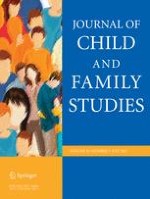04-04-2017 | Original Paper
Parental Support for Autonomy and Child Depressive Symptoms in Middle Childhood: The Mediating Role of Parent–Child Attachment
Gepubliceerd in: Journal of Child and Family Studies | Uitgave 7/2017
Log in om toegang te krijgenAbstract
To facilitate understanding of the factors associated with child depressive symptoms in middle childhood, we examined the roles of parental support for autonomy and parent–child attachment in child depressive symptoms among 150 Chinese parent–child dyads. The participating children’s ages ranged from 6 to 12 years old. Parental support for autonomy was coded from a conflict resolution and a cooperation task. Children reported their depressive symptoms and their attachment relationships with the participating parents. After controlling for parent depressive symptoms, parental support for autonomy was associated with fewer child depressive symptoms. The association between parental support for autonomy and child depressive symptoms was mediated by parent–child attachment quality, suggesting that parental support for autonomy was negatively associated with child depressive symptoms through its positive association with parent–child attachment quality. Moreover, the positive association between parental support for autonomy and parent–child attachment quality was stronger for older children. The current study expanded the knowledge on parental support for autonomy in middle-childhood and its association with parent–child relationships and child mental health. Future research is encouraged to pay more attention to the role of parental support for autonomy in various aspects of child development for children in middle-childhood and pre-adolescence.
